Definition and equation
PED is a measure of the responsiveness of a quantity demand to a percentage change in price of a product.
PED= % change in quantity demand/% change in price
% change = [(new-old)/old]x100
PED value is always going to be negative as demand and price will always move in different directions, hence we take the absolute value for the PED; absolute value of -5 is 5, -3 is 3.
Values and their meanings
PED=0, the demand is perfectly inelastic and won’t change even if price changes, however this is just a theoretical value. Doesn’t ever exist in the real world./ the demand curve is a vertical straight line
PED=0-1,relatively inelastic,the %change in demand will be less than proportional to the %change in price, examples: newspapers/ the demand curve is a steep line
PED=1,unitary elastic,the %change in demand is equal to the %change in price, no examples/ the demand curve is at 45°
PED=1-♾️,relatively elastic,the %change in demand is more than proportionate to the %change in price, examples: luxury goods/ the demand curve is flatter
PED=♾️,perfectly elastic, buyers will only buy at 1 price point not lower or more hence demand moves to 0 when price changes./ the demand curve is a horizontally straight line
Determinants
Availability of substitutes: if there are many substitutes in the market the ped will be relatively elastic as a price increase will cause consumers to stop buying the product and buy from other suppliers, like car models in the same segment. Vice versa
Addictiveness: If a good is addictive, even a huge increase in price will only cause a low demand contraction as consumers are dependent on the good for their well being, like alcohol. Vice versa
Proportion of income: In the last slide we mentioned newspapers are relatively inelastic because they take up only a very minute proportion of a person’s income hence any price change doesn’t change the demand as much. Vice versa
Time period: This refers to the amount of time consumers have to adapt to the price change, if only a short period of time has past by the change in demand will be relatively inelastic(especially if the good is urgently needed, like ride sharing services midst a rainfall) as it takes time to find substitutes and change habits, but as time goes on the effect of higher prices will be more impactful and demand will contract even more as people find more substitutes, becoming relatively elastic.
Luxury or necessity: If a good is a necessity then its ped will be inelastic as people will still need it like oil(at least for now), however if its a luxury like ferraris or Lamborghini’s the demand for them changes a lot with price changes because they aren’t needed to survive.
Usefulness
Firms aim to maximise profits and with knowledge of the ped if their goods this becomes easier, as if their good has an inelastic ped they can increase the price to maximise profits and revenue, and decrease the prices for their elastic ped goods.
You can try and draw a Demand curve for relative inelasticity and elasticity then check with these actions. Reduce the price for elastic and increase the price for inelastic, and check the new revenue. In most cases it will be higher if price isn’t changed too much.
The revenue is the area of the rectangle formed by price and quantity demanded.
Firms can also use price discrimination to target different segments of incomes
Diagrams
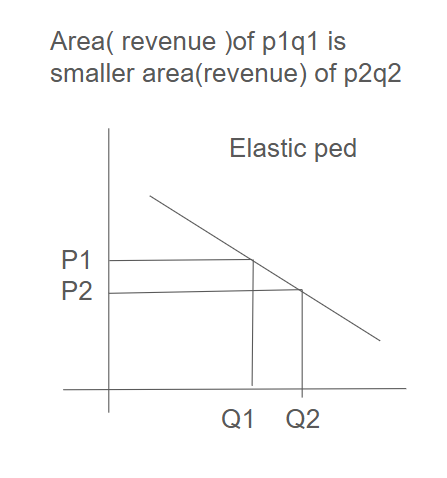
Credits to: savemyexams
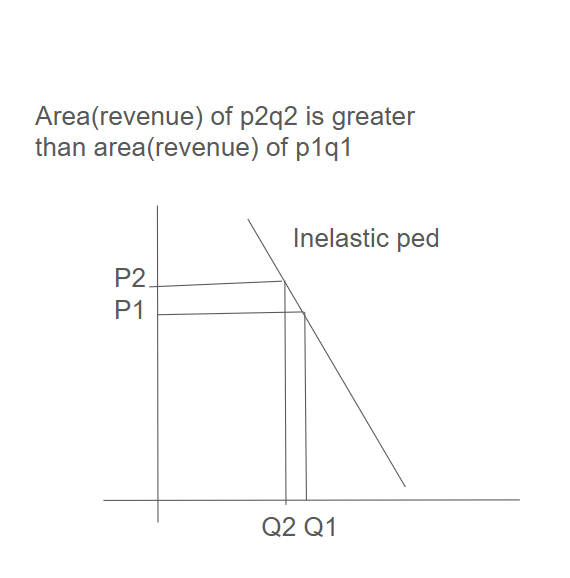
Credits to: savemyexams
For the Government
Governments can tax ped inelastic goods to increase their tax revenue as the price increase won’t affect demand as much.
Conversely governments can also tax ped elastic goods to discourage their consumption like imports or reduce tax on ped elastic goods like some merit goods to encourage their consumption.
PED of Primary and Manufactured Goods
| Primary goods are raw materials and agricultural products | Manufactured goods are those made with the raw materials |
| PED is inelastic | PED is elastic |
| Substitutes: few substitutes as raw materials are specific to the product | Substitutes: many substitutes |
| Luxury: primary goods are necessities as they are raw materials | Luxury: Some are luxury goods |
| Proportion of income: raw materials are often low proportion of income as compared to the finished product | Proportion of income: can’t be generalised but on average much more than that of primary goods |
| Addictiveness: not addictive in the traditional sense but are very wanted by manufacturers | Addictiveness: some can be addictive some may not be |
| Time period: In the short time period primary goods are inelastic ped as it takes time to switch to another good, and it takes a long time to be able to switch from primary products. | Time period: same case as for the primary goods but generally it takes lesser time to be able to adapt to the price change as there are many manufactured goods. |
Income Elasticity of Demand
Measure of responsiveness of quantity demanded to a change in price to a %change in incomes, incomes(y) on y axis, Qd on x axis
YED= %change in qd/%change in incomes
An Engle curve is used to demonstrate this, incomes on Y axis and QD on x axis
In this YED values can be negative or positive
Values and Angle Curves for Each
If YED is 0-1 the good is a normal good; its demand changes less proportionately than change in income. Example; First hand economy cars
So if income increases 10%, demand increases 5%, vice versa
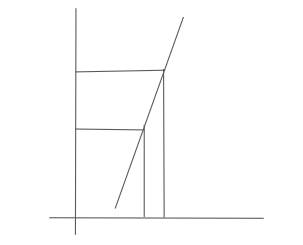
Credits to: savemyexams
If YED is more than 1, the good is a luxury good and the change in demand is more than proportionate to the change in incomes. Example; Sports cars
If incomes increase by 10% demand increases by 15%, vice versa
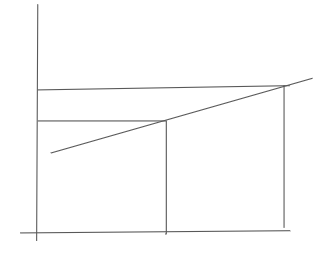
Credits to: savemyexams
If YED is less than 0 the good is an inferior good meaning as incomes increase the demand decreases as people substitute these goods with ones that are of higher quality. Example; Used cars
If incomes increase by 10% the demand reduces by 10%, meaning when incomes decrease its demand increases
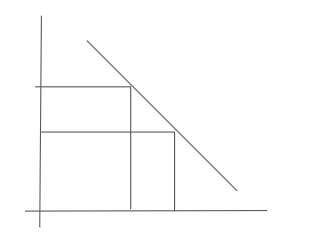
Credits to: savemyexams
Factors
The YED will be affected by any economic changes that cause a change in incomes.
Factors like recessions( incomes reduce ), economic growth( incomes increase ), new national minimum wage legislations, taxes, etc.
Its Importance
YED much like PED helps firms understand how the consumer demand for their goods will change due to changes in incomes.
Using YED they can predict the changes in demands and adapt to changes in incomes of the economy They need to adapt if they want to stay competitive, which can be done by diversifying or specialising.
This can also lead to growth of related industries, we are seeing the increasing demands of EV cars, hence industries of battery manufacturing will also grow with them.
Its very useful for developing economies where incomes keep on changing, and markets can use this to a great advantage.
